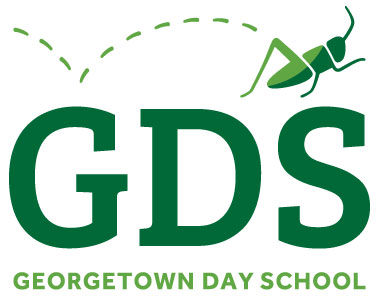I write today to shine a light on some of the incredible happenings in our 4th, 5th and 6th grades this year, catalyzed by the 1:1 device initiatives launched at the start of the school year. The easy headline here is, “Every student now has a computer!”
While quantitatively true, that doesn’t reflect the curricular underpinnings and student-driven motivations behind the initiatives, nor does it even begin to scratch the surface of the myriad, exciting new learning opportunities that are happening “beyond the devices.”
Problem Solvers
Two week ago, I’d wrapped up my work for the day and was packing up my backpack, getting ready to head home to my own kids (and thus start my second full day of work…), when two 4th grade students tapped on the door to my office.
The girls explained to me that they had managed, “somehowwwww,” to change the background of their Chrome app to display nothing but pugs: Big pugs. Little pugs. Pug puppies cavorting on comfy couches. Adult pugs lollygagging lakeside. It was just a straight-up pugfest, and they needed an escape.
Instead of telling me how this problem with their technology was slowing them down and preventing them from doing their “real work” (which is the standard “adult” conversational leadoff), they gave me a detailed walk-through of the elaborate path they had taken to enable this pug-background feature, and then shared the ways they’d attempted to “de-pug” the situation. They concluded their presentation by saying essentially, “So this is a really cool feature, and we also want to learn how to turn it off.” All while giggling uncontrollably.
The point: these girls were exploring and had wandered off course, but didn’t see themselves as lost or slowed down by the technology roadblock in front of them. To them, it wasn’t even a roadblock, but rather something new to learn.
Noting their visual tracking and verbal re-articulation of the steps I gave them to return their browsers to a pug-free state, I knew that from this interaction they had gleaned more than just the steps to access their browser’s settings and disable a Chrome extension. They had also experienced the process of finding and communicating the root cause of a technology issue, and through that had allowed me, their “guide on the side” in that moment, to steer them toward a solution that they were able to execute on their own. In proper teacher lingo, it was student-focused, it was inquiry-based, it was problem-based learning. (And it was awesome!)
Teaching the Teachers
In addition to finding new and innovative ways to integrate pug imagery into their technology, I’ve seen many instances of students at the center of a spontaneous role-reversal in our classrooms and hallways. While the term “digital natives” has by this point become something of a cliché, it remains hard to overstate how comfortable the current generation of learners is with not only using technologies with which they’re already familiar, but also with learning new technologies and assimilating them into their lives, all on the fly.
It’s because of that inherent ability that I’ve seen teachers having “I don’t know how to do this” moments with technology, who have then been rescued by a student or group of students, able to swoop in and get things back on track. Those students are akin to a local saying to their disoriented teacher-tourists, “Sure. It’s the big blue building, two blocks that way, on your right—you can’t miss it.”
Technology aside, in those moments of giving “directions” to their teacher-tourists, I see our digitally-native students growing in confidence, sharpening their communications skills by articulating the knowledge they’ve amassed, and capitalizing on these new opportunities for leadership that are set before them.
Reboot the Teacher
The 1:1 device programs have also allowed for a wondrous injection of innovation, creativity, and collaboration amongst many of our faculty. As an example, my colleague Laura Loftus developed an entire curriculum for teachers to provide them with an opportunity for sustained hands-on time with new educational applications, sites, and services, as well as the devices themselves. During the summer, she hosted several three-day workshops with different cohorts of teachers to train teachers in 1:1 grades, and then supplemented that with an online course where teachers could test, reinforce, and expand their newfound expertise.
This kind of professional development—teacher-led, peer-to-peer, and curriculum-focused—brings immediate benefit to the teaching and learning experience for the students in our classes, and also illustrates how the arrival of our 1:1 initiatives have led to a windfall of curricular innovation and renewed teacher inspiration in their lesson planning and delivery.
As we continue on this year with our 1:1 programs now in full swing in grades 3–6, I’m excited to learn of new ways in which our students and teachers are using these resources to grow in their capacities to actively and creatively solve problems, to leverage the devices to deepen their own agency in their learning, and to continually reinvigorate the way they approach their time here at GDS.


